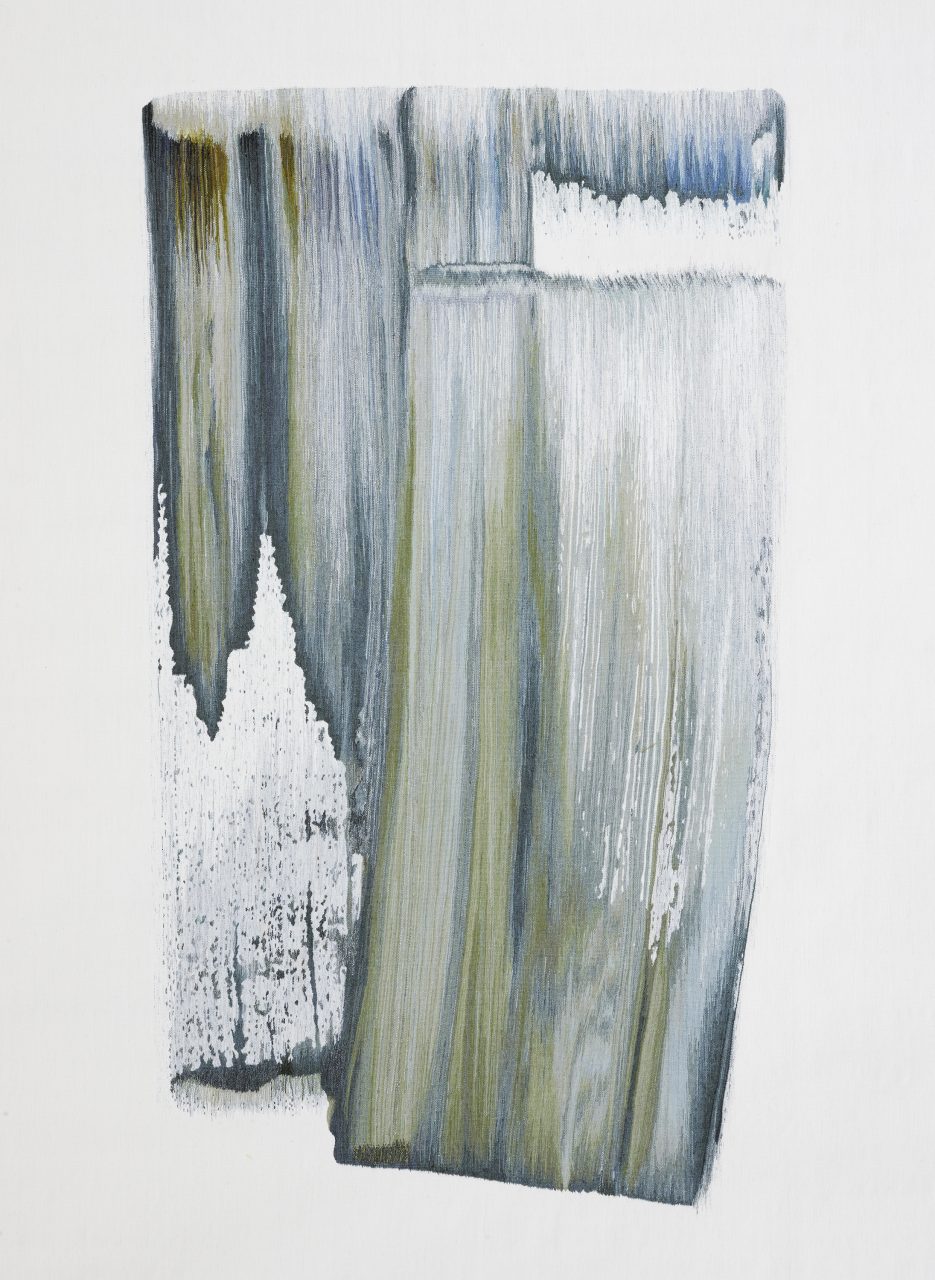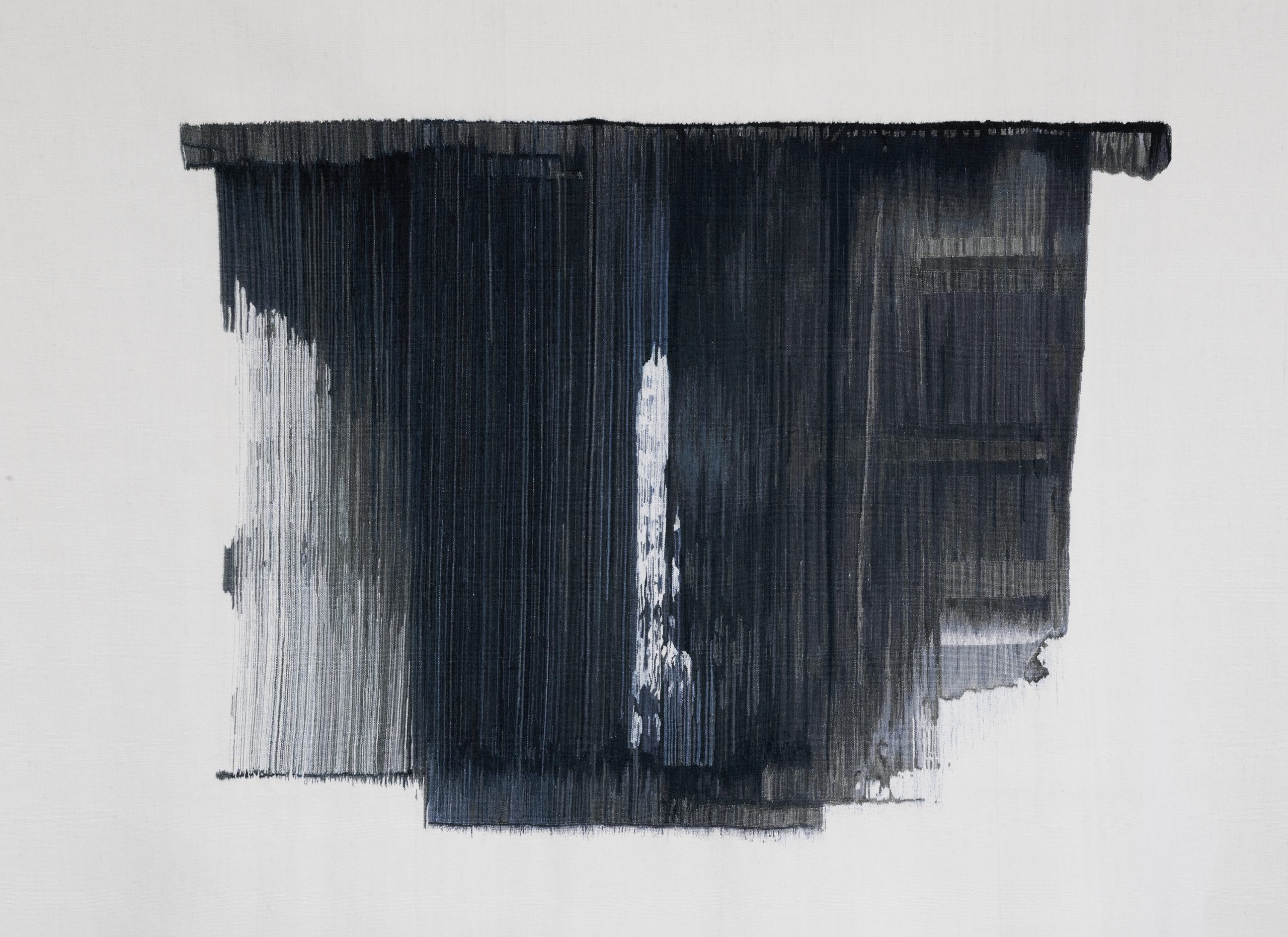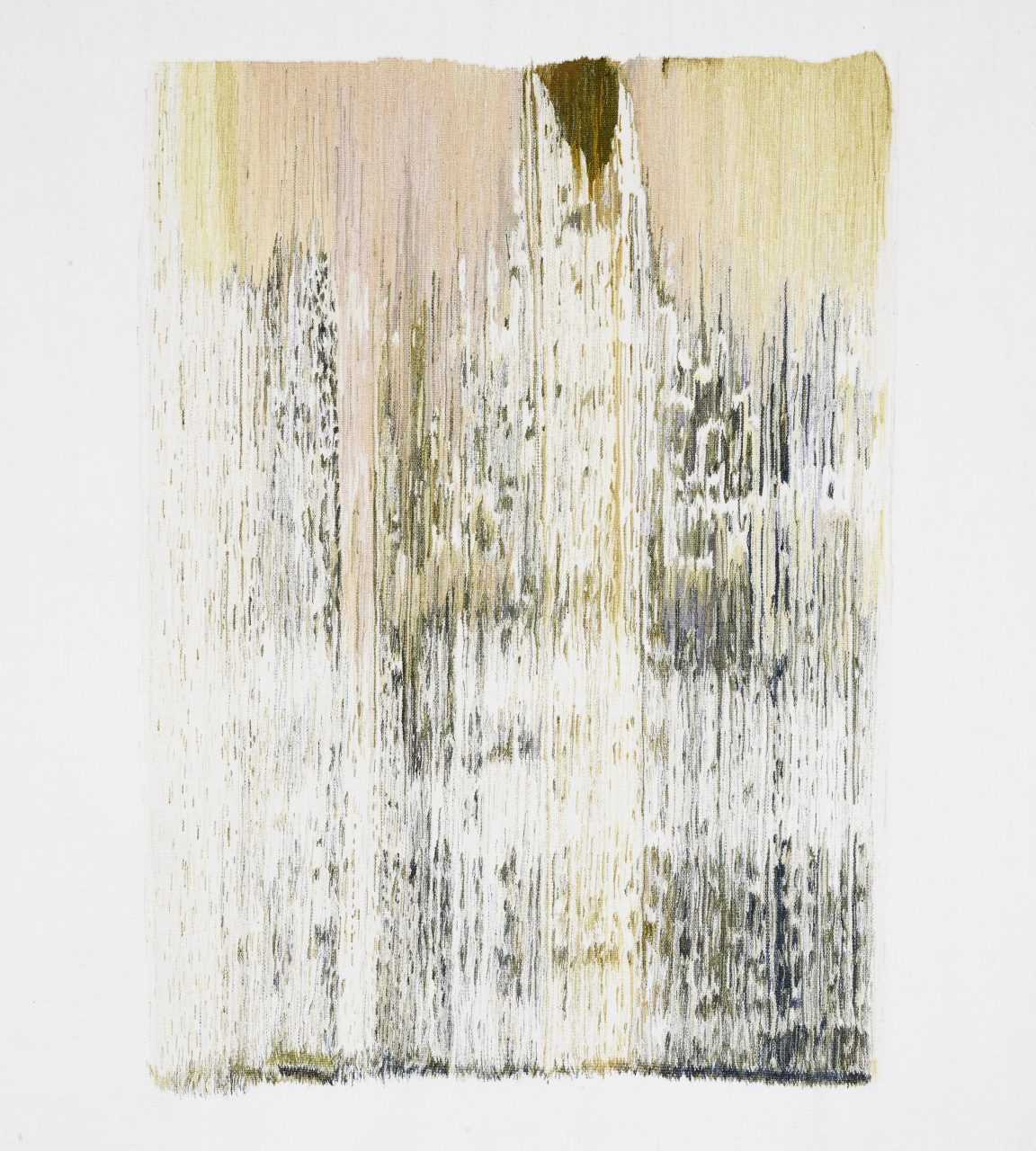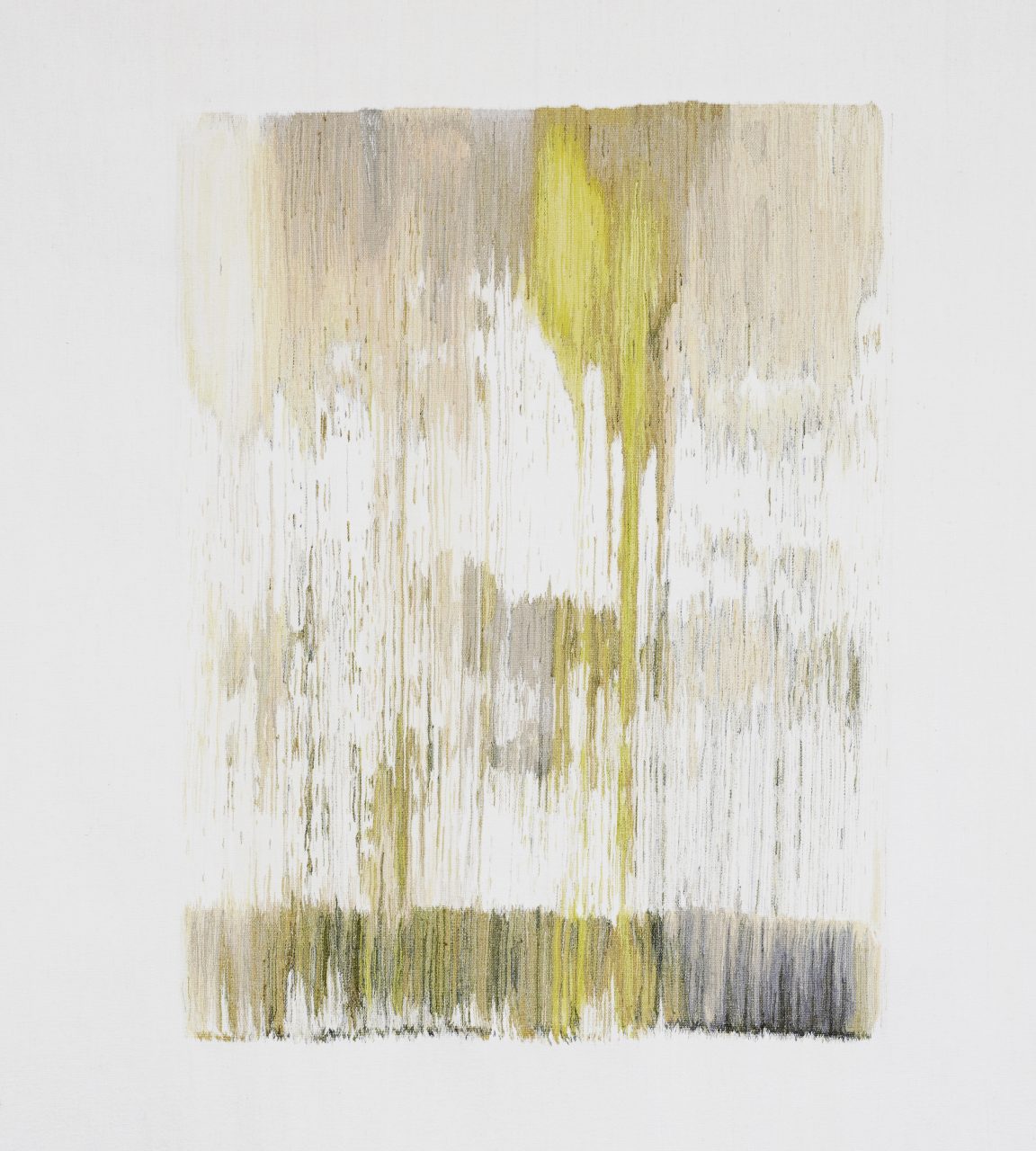At first glance, one might perceive Alexandra Mocanu’s broad brushstrokes as mere brazen, single gesture applications of paint. But on closer inspection, these expansive pieces reveal themselves as woven tapestries; interpretative impressions of gouache croquis, the French Romanian-born artist paints as prompts for the highly complex works she eventually creates. Rather than boasting themselves as loud, one-note assertions of skill or trompe l’oeil gimmicks—a trend far too prevalent these days—the intricate tapestries satisfy the haptic and visceral desires of an image-saturated, art-savvy audience.
On view till January 24th at New York’s Twenty First Gallery, the Tapisseries exhibition brings together 10 of Mocanu’s latest oeuvres.


Capturing the painterly qualities and effects of such an ethereal medium in a coarse, fibrous application is no small feat. Mocanu has tirelessly mastered a bespoke technique that is as contingent on visual perceptibility as it is on manual expertise. Developed over time, this approach has allowed her to meticulously perfect certain graphical nuances in the tapestries; the elucidation of rough edges, the resignation towards unexpected drips, the control of quick gestural movements, and the contrast between opaque and translucent layering.

“What I admire most in Mocanu’s work is the duality between the spontaneity of her brushstrokes and the patience, technical skills, and thoroughness embedded in her weaving,” the gallery’s director Renaud Vuaillat said.
From a young age, Mocanu was surrounded by artisanal production. Her mother is a textile artist and her father is a furniture designer. Immersed in the scents, sounds, tools, and materials that shaped her formative years, the artist began to explore her own compositions; first through photography and then with painting, before arriving at tapestry.
The artist’s ability to combine the seemingly disparate disciplines of painting and textile design stems from her training in both domains; a self-fashioned methodology that coalesces from fine art and artisanal production. Her work is a testament to the concept of adjacency put forward by American sociologist Richard Sennett: through close control of their process, craftspeople develop the ability to bring together two divergent elements or skillsets in the attempt of forging a new type of practice and achieving results that are entirely nascent.


